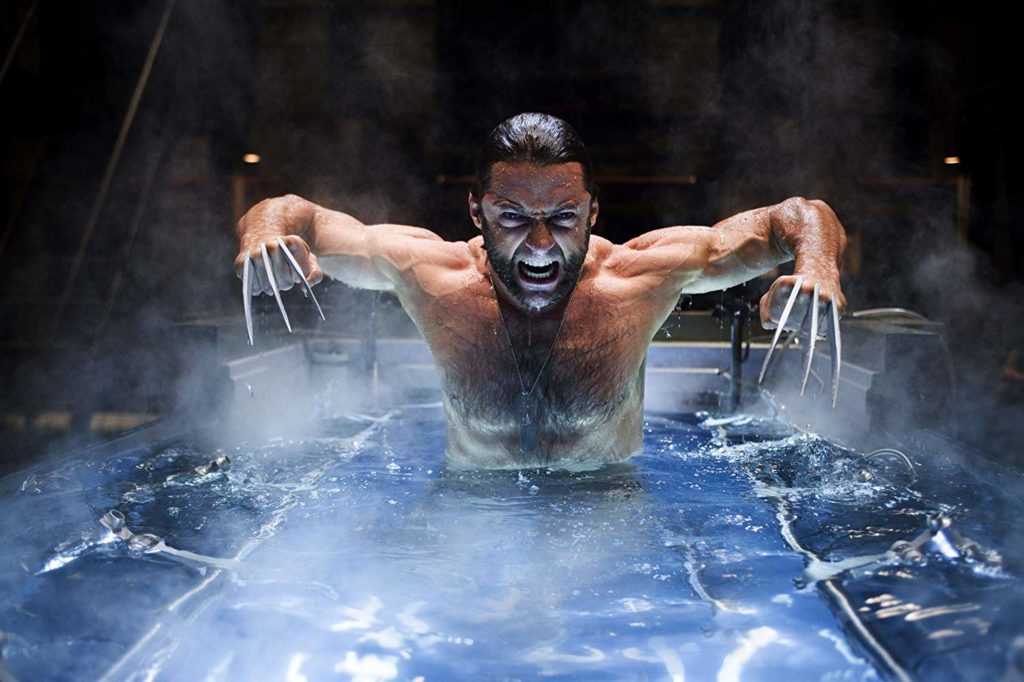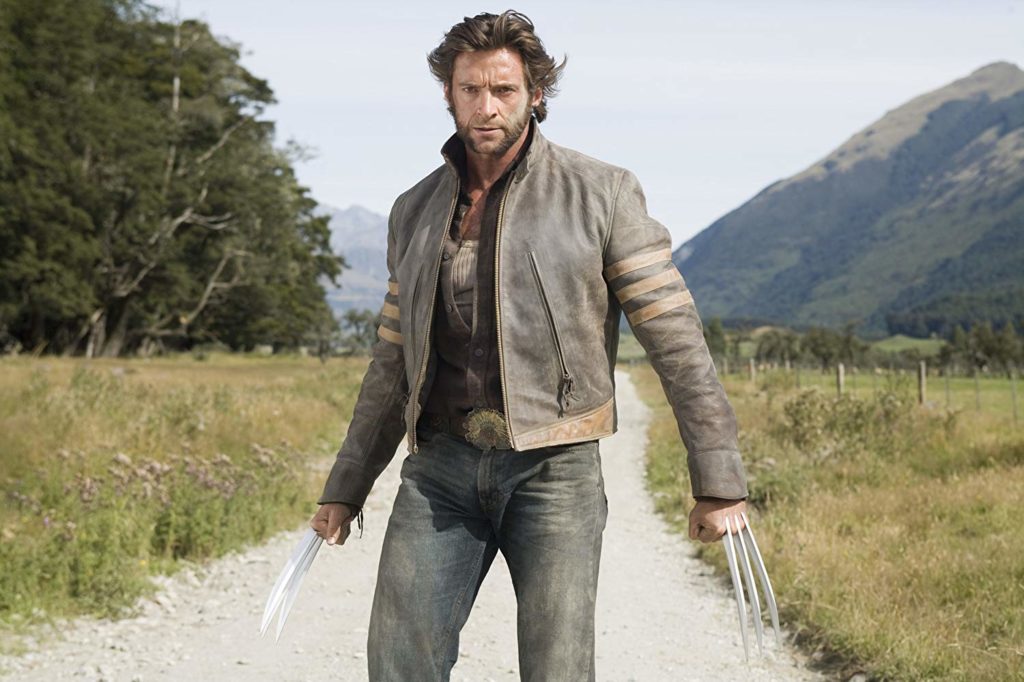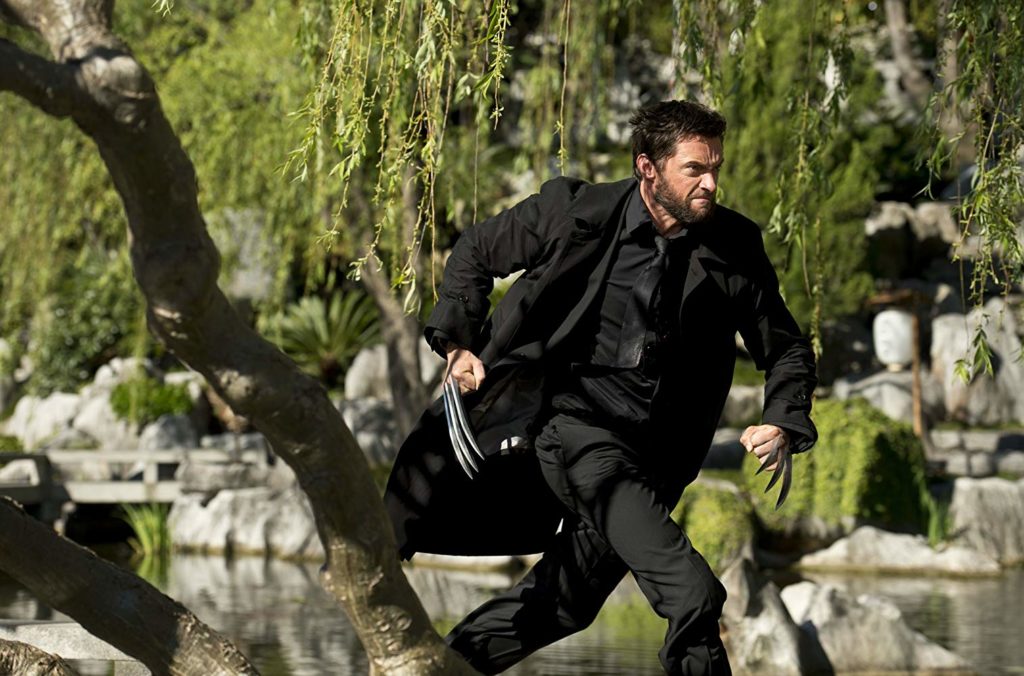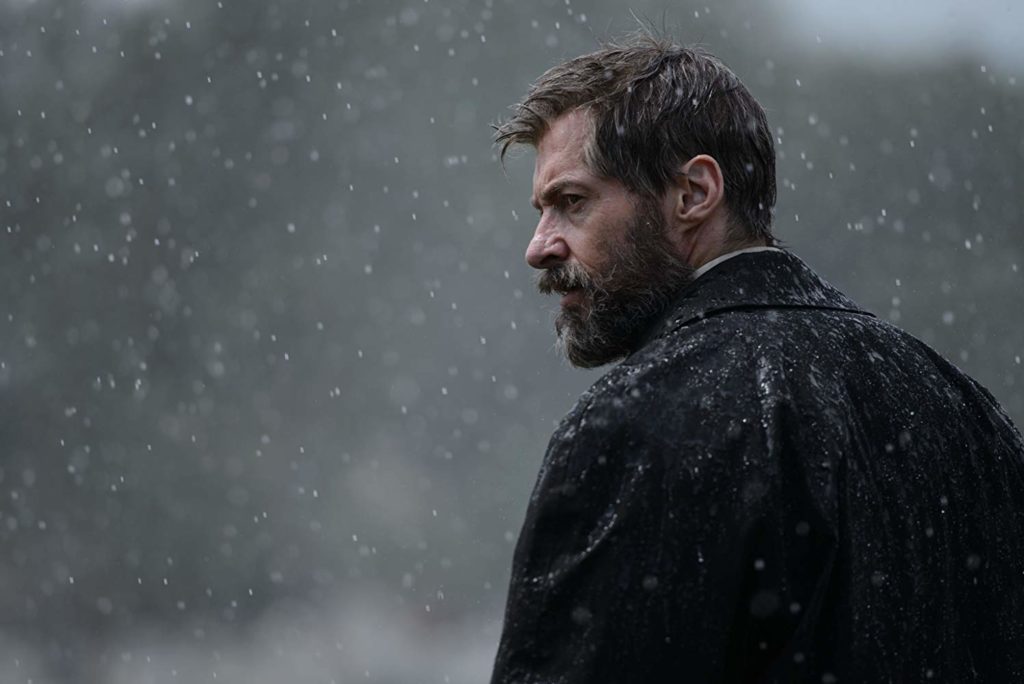Following The Last Stand (2006), the X-films franchise fractured into two interlacing trilogies that never fully reconnected: one a series of prequels following the formation of the X-Men, the other tracking the mysterious past and grim future of fan-favourite Wolverine. The more intimate scope allows Hugh Jackman’s dedicated performance space for development, enabling a tight examination of the world through one individual’s experience, instead of a whole mutant community. Jackman’s outsider becomes the sole focus of one trilogy, delving into his internalised struggle between noble hero and mutant weapon in films of wildly different quality.
After several allusions to his obscure past, particularly in X2 (2003), X-Men Origins: Wolverine (2009) shows us the experiments Logan has suffered and his subsequent memory loss, and how he became the reclusive cage-fighter first introduced in X-Men (2000). Of course, given that Wolverine ends Origins with his mind erased, any character development would be redundant – that is, if Origins actually had any.

After fleeing his 1850s childhood home in Canada with his half-brother Victor/Sabretooth (Liev Schreiber), Logan (real name James Howlett) and Victor become eternal soldiers, fighting their way through a century of wars until they are picked up by William Stryker (Danny Huston) for his specialised mutant squad. Years are fast-forwarded and by the time the story slows back down, Logan has already become the reluctant hero of the main X-films, abandoning Stryker’s team because of their immorality, something which Victor seems inherently eager to indulge. Neither character seems to ‘evolve’ here, but rather emerge fully formed.
Origins gives lip-service to Wolverine’s animalism frequently referenced in X2, but mostly settles for a generic and dull version of the anticipated backstory, Wolverine accepting the adamantium infusion to exact revenge for his murdered wife. Instead of informing Logan’s character, Origins settles for the iconography of his “indestructible” adamantium skeleton or his leather jacket (which he loses by the end of the film anyway) rather than examining his inner nature.
Such disengagement, alongside some incoherently shot action and a plethora of underwhelming characters (including twisted versions of fan-favourites like Gambit (Taylor Kitsch), Blob (Kevin Durand) and especially Deadpool (Ryan Reynolds)) rightfully make Origins one of the most derided X-films. Yet despite these many issues, Jackman remains committed to his role, doing his best to convey an inner nobility against the anguish and rage caused by Stryker. Origins is an ultimately shallow character-piece, displaying Wolverine rather than exploring him, but it does establish him as a mutant without full control of his past or his powers, someone who must struggle against what he was “made to be” versus who he wishes to become; an animal or a man.

Such struggles are better serviced by the second entry, The Wolverine (2013), the only X-film to directly proceed from Last Stand. If Origins ostensibly concerned itself with Wolverine’s birth, The Wolverine is explicitly focused on his eternal life and healing power. After being forced to kill Jean Grey (Famke Janssen), Logan has abandoned the X-Men and retreated into the wilderness, haunted by the survivor’s guilt that comes from outliving his loved ones. After being contacted by the precognitive mutant Yukio (Rila Fukushima), Logan travels to Tokyo to bid farewell to Ichiro Yashida (Haruhiko Yamanouchi), a Japanese soldier he saved from both the Nagasaki nuclear bomb and an ‘honourable’ seppuku. Yashida is another man plagued by survival, only he craves the immortality that Logan sees as a curse. Death and honour intertwine throughout the film, granting The Wolverine a thematic focus and genuine pathos that makes it a deeply engaging entry.
We saw Wolverine fighting a century of warfare in Origins, but only in The Wolverine is the impact felt; Logan has fought so long as an immortal soldier that he is now an eternal samurai with no master or purpose. A Ronin. Alongside such emotional investment, director James Mangold brings clear and crisp action to The Wolverine, particularly amid the exhilarating Bullet Train set-piece. Although The Wolverine falters slightly in the second half, abandoning existential explorations of Logan’s abilities in favour of a confused,overly-convoluted plot and a generic climactic battle against the robotic Silver Samurai, the strengths of its core ideas makes the film a solid standalone story. Aside from the continuation of The Last Stand, The Wolverine is relatively separate from the other X-films (even the post-credits scene teasing a returning Magneto and Professor X seems unrelated to Days of Future Past (2014)), but its thematic concerns with Wolverine’s emotional burden would be continued in Mangold’s second film of the franchise, and the eventual end to Wolverine’s pain, Logan (2017).
The final Wolverine film is somehow both a rapid departure and natural apotheosis of the preceding X-films, returning to the same gritty tone as the original X-Men, only now far more intense and violent – thanks especially to its R-Rating. Despite its brutality and dour tone, Logan is perhaps the X-film most preoccupied with the impact of flamboyant superheroics so long neglected by the franchise. While Logan disparages X-Men comics to his daughter-clone Laura (Dafne Keen) as “all bullshit”, audiences see the impact which mutant heroes have on those disenfranchised from society; it becomes apparent that the Wolverine action-figure clutched by the child mutant refugee in ‘Eden’ is symbolically more significant that its broken, real-life counterpart.

Logan therefore takes the strongest aspects of a wildly uneven franchise to use as its foundation, including Jackman and Stewart’s performances, bringing their iconic characters to unexplored emotional depths. Their interactions are tinged by frustration with the other’s failed potential, maintaining their miserable existence isolated from the mutant community Xavier had wished to build, their genuine affection coated and hardened by tragedy. It is Laura who brings them both new life, even as Logan must face literal manifestations of his past through his cloned doppelganger X-24. If The Wolverine showed him as a samurai, Logan is like a Western (even overtly referencing Shane (1953)), featuring one who must use violence to protect innocents, even if it means his exclusion from their community.
Watched together, Logan even redeems aspects of Origins by providing a circularity to Wolverine’s story: protecting his father-figure, Xavier, after murdering his biological father in Origins, carrying around an adamantium bullet to end his life, which in Origins took his memories away, and of course trying to deliver the experiment children across the border to Canada, back to Logan’s home country. In this escape, Logan also tackles the prejudice most X-films have only used the aesthetics of, the Latina Laura and ethnically diverse mutant kids sought and controlled by a malicious US entity, while drunk rich white kids can chant “U!S!A!” as they freely cross the border in Logan’s limo. Although examining the near-future dystopia and eventual outcome of Wolverine, Logan keeps one eye on the past, about the violence and guilt that has formed his life, violence Laura was literally born into. Both must find ways to live with the pain that has been done against them, and they have inflicted upon others. Both will manage to push past their traumatic origins, and refuse to become what others would make them.

The X-films’ Wolverine was never quite comics-accurate, being less sardonic, taller (in the comics Logan is 5’3 against Jackman’s 6’3), and never donning his pointed mask. Yet as its own creation, Jackman created a complex character who was made to kill, but ended up a saviour. While Wolverine will undoubtedly return under Disney, Jackman and Mangold’s mark on the character, who they sent off in perfect fashion in Logan, means it will be some time before he is recast or rebooted. Such recasts were central to the ‘prequel trilogy’, which mostly turned away from the grit and introspection of Wolverine’s films to revitalise the main X-Men with youth and energy, as they attempted to integrate into the superhero mainstream with world-ending stakes.
Stay tuned for Part III. Find Part I here, and a review of Dark Phoenixhere.
